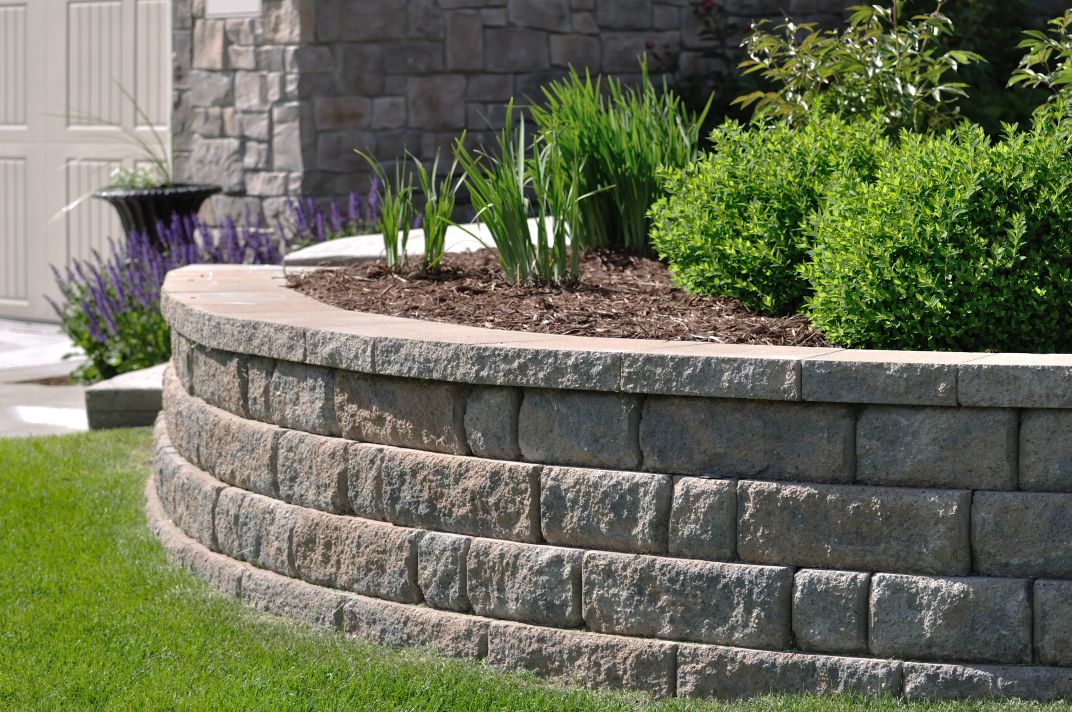What is the best material for a retaining wall?

The best material for retaining wall is the one that will fit your needs. This type of wall can be constructed in various ways, depending on the design of the structure. For instance, you can choose to use a brick retaining wall to reclaim land that has been eroded by the ground. It is a durable, strong material that will withstand extreme weather conditions. The downside of using concrete is that it is cold to the touch and cannot be painted.
If you want a retaining wall that will complement the look of your home and support sloped land, you'll need to consider the style of the retaining wall. While you can opt for a timber re-enforcement, you should keep in mind the safety of the retaining wall first. If it's going to be exposed to extreme weather conditions, you can't put it up a wooden re-enforcement wall.
Timber
Timber re-enforcement walls are popular because they are cheap and give a natural appearance. Although timber re-enforcement walls aren't as sturdy as concrete ones, they can still look nice. Fortunately, most timber retaining walls are made of treated pine, which is resistant to water and the sun. The timber sleepers typically last for up to 20 years, but they won't be as strong as a concrete or masonry built re-enforcement wall.
Timber retaining walls are a great choice for a sturdier retaining wall that offers good looks and structural integrity. A timber pillar will likely last for 15 years or longer, depending on the conditions. However, timber pillars are cumbersome and difficult to move, which may prevent them from being an ideal choice for some projects. Therefore, it is important to consider the size and aesthetic appeal of a sturdier option.
Wood
Wood has a rustic, classic feel. It is easy to work with, and the grain and texture are familiar. If aesthetics are important to you, wood is the best choice. It is also lightweight and easy to handle, which makes it a good choice for retaining walls. The downside to wood, however, is that it is not durable. If you're planning to use it for a sturdier retaining wall, you may want to consider other options.
Wood has a limited lifespan, but can be used to construct retaining walls. With proper care, a wood retaining wall can last more than 20 years. But it can rot. This means you'll have to replace it eventually, and you'll need to repair it yourself. So if aesthetics are important to you, it's best to avoid using wood for a retaining wall. In addition to being expensive, wood is easy to handle, which makes it a popular choice for smaller projects.
Stone
Aside from its durability, natural stone is also very attractive. A stone retaining wall will never fade or crack. This material also has beautiful aesthetics, like unique shapes and lichen growing on rock. Its lightweight nature makes it a great option for building a retaining sturdier wall. It's easy to install, and will blend into the rest of the garden. And as it's a natural product, it will add value to your property.
Stone veneer is an excellent choice for retaining walls. This material is highly durable and can withstand a variety of conditions. If you're planning to build a retaining wall, you can consult with a professional and get a quote for the construction. It's best to consult with a builder or other tradespeople before installing a retaining wall. If you're constructing a gabion re-enforcement wall, you should use timber blocks.
Bottom line
For a retaining wall, the best materials are largely dependent on the size of the structure and the surrounding landscape. For a retaining wall with a small slope, wooden blocks and stones are a suitable option. The smaller ones don't need to be as sturdy, so you can use a combination of materials. Moreover, some retaining walls are made of poured concrete and are more expensive than others. Contact a professional retaining wall builder for more information.
